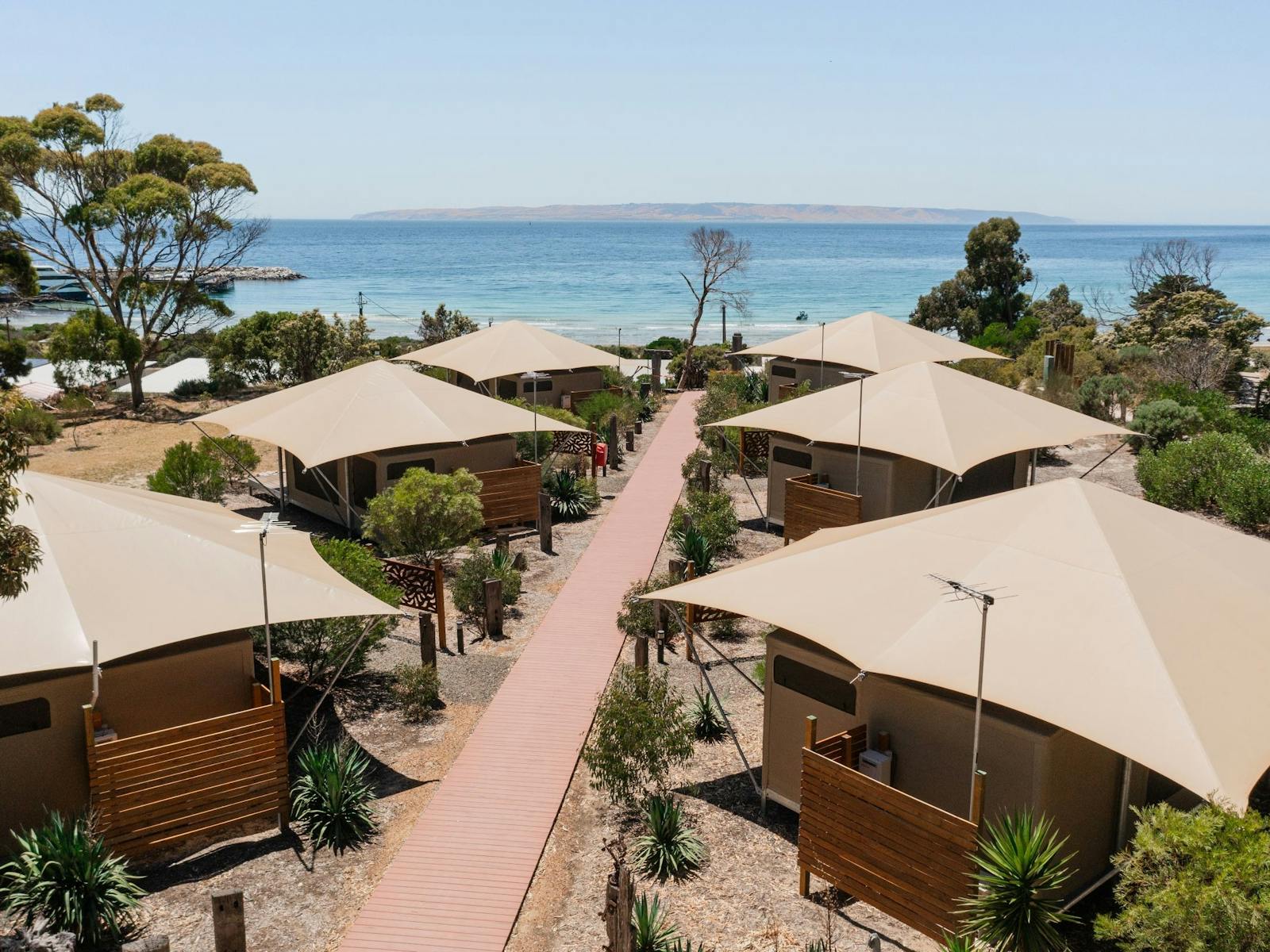Dudley Peninsula, Penneshaw and Cape Willoughby
Near the ferry terminal in Penneshaw, see Pied and Black-faced Cormorants and flocks of Crested Terns. At the Penguin Reserve, see the colony of little Fairy Penguins at night on a guided tour. Lashmar Lagoon, located along Cape Willoughby Road, has ducks, swans and other water birds. Hooded plovers can be found at Penneshaw Beach and Antechamber Bay, while the tea-tree thickets along Chapman River house bush birds.
The Northern Coast
View little Pied Cormorants near streams and farm dams, while rocks at the river mouths are visited by flocks of Crested terns and White-bellied Sea eagles. See Yellow-tailed Black cockatoos, Crimson rosellas in the tall gums, and the Galah, birds not often seen on the island. Nankeen kestrels and Wedge tailed eagles regularly visit Constitution Hill above Snellings Beach. At Emu Bay, spot Red-capped plover, Ruddy turnstone and the Australian pelican.
The South Coast
Meet the Blue wren on Kangaroo Island—officially known as ‘superb fairywren’ by the Seal Bay car park. The dryland area is explored by White-browed scrubwrens and Brown and Striated thornbills. Bales Bay is visited by White-faced herons and Eastern reef egrets while Sooty oystercatchers and Hooded plovers patrol the beach. Vivonne and Hanson Bays have a freshwater estuary and similar habitats, with Boobook owls and Nankeen night herons, little black and little Pied cormorants, and small bush birds.
Cygnet River, Bay of Shoals and Kingscote
When entering Kingscote, you can’t miss the massive flock of little corellas. The jetty has plenty of gulls and cormorants. When the seasonal lakes at the Bay of Shoals are full, Australian shelduck, Red-necked avocets and White-headed or banded stilts can be seen, making this a favourite spot for twitchers.
The Duck Lagoon wetland near the small settlement of Cygnet River, seasonally filled by Brown Creek and the Cygnet River, has yellow-tailed and sometimes glossy black cockatoos, a range of bush birds including scarlet robins and water bird species such as Australian shelducks, Australasian shovellers, and black-fronted dotterels. Observe them on the walking track around the lagoon, or from the bird hide.
Helpful Birdwatching Tips to Get You Started
Want to go birdwatching? Follow these tips and tricks to make the most of your adventure.
Go into stealth mode
Birds are easily startled and don’t hesitate to fly away, so it’s essential to move slowly and quietly, and avoid making any sudden movements or loud sounds.
Listen carefully
Pause for a moment and listen to the sounds of birds. Try to match up the bird calls with the species. This can be challenging at first, but practising listening to bird songs makes it easier and is enjoyable.
Think about the habitat
Various locations offer different habitats. Waterbirds are near water sources. Tall trees provide roosts for parrots. Gums have hollows used as nests for many birds. Low and dense bush is favoured by small birds as it provides cover against predators.
Sensory experience
Look, touch, and smell with purpose. Bush bird calls can sometimes alert you to predators. Your nose can pick up the scent of blossoms, indicating the possibility of seeing spinebills or other honeyeaters. Feel and touch the plants. If they are sharp and thorny, there could be wrens and thornbills around.
Early birds
Although many birds can be seen during the day, the early mornings are often a time of increased activity. Consider which birds you want to see and when they are likely to be active, then plan your trip.


















